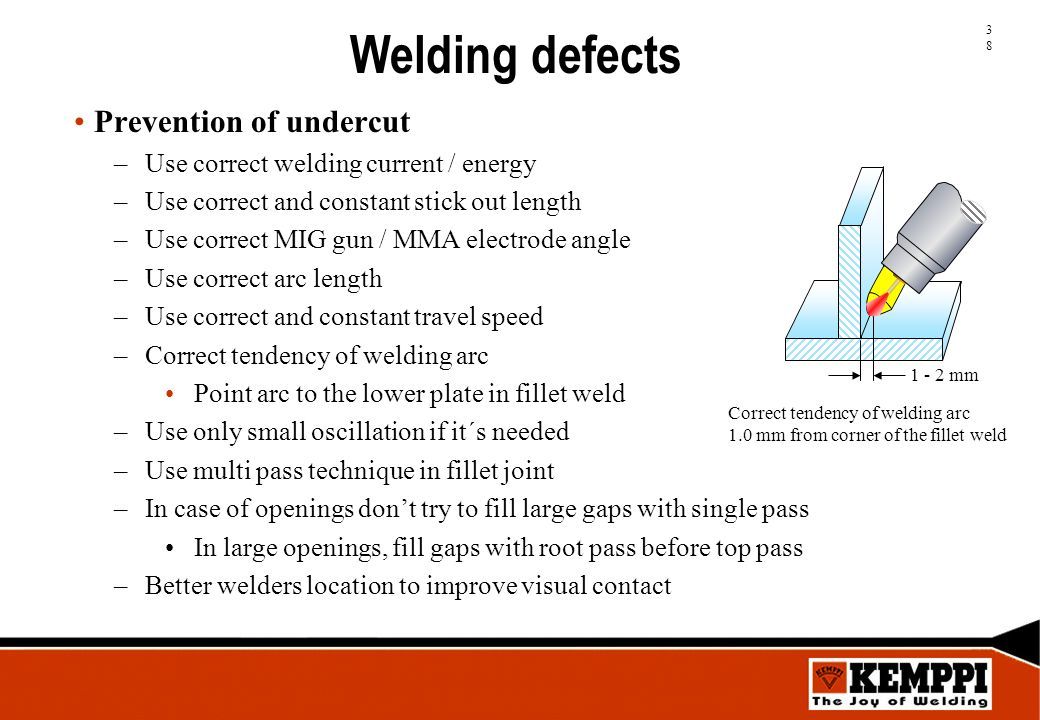Step-by-Step Overview to Preventing Weld Undercut in Different Metals
Step-by-Step Overview to Preventing Weld Undercut in Different Metals
Blog Article
Grasping the Art of Welding: Just How to Avoid Undercut Welding Issues for Flawless Construction Outcomes
Efficiency and precision are extremely important on the planet of welding, where even the least imperfection can jeopardize the architectural honesty of a fabricated piece. One typical obstacle that welders face is undercutting, a flaw that can damage a weld joint and lead to expensive rework. By recognizing the source of undercut welding and executing efficient methods to avoid it, welders can elevate their craft to new degrees of quality (Preventing weld undercut). In the search of remarkable fabrication results, mastering the art of welding to prevent undercut problems is not simply an ability yet a need for those making every effort for perfection in their work.
Recognizing Undercut Welding

To stop undercut welding, welders must make sure correct welding criteria, such as readjusting the current, voltage, travel speed, and preserving the appropriate electrode angle. By comprehending the causes of undercut welding and executing precautionary steps, welders can accomplish premium, structurally sound welds.
Sources Of Undercut in Welding
Comprehending the factors that contribute to undercut in welding is vital for welders to produce top notch, structurally sound welds. Poor welding incorrect or current welding rate can likewise add to damage. Recognizing these reasons and implementing appropriate welding techniques can help avoid damaging concerns, guaranteeing strong and sturdy welds.
Strategies to Stop Undercutting

To reduce the threat of damaging in welding, welders can use calculated welding methods aimed at enhancing the top quality and honesty of the weld joints. Additionally, making use of the correct welding method for the details joint arrangement, such as weave or stringer beads, can add to reducing damaging.
Moreover, appropriate joint preparation, consisting of ensuring clean base products devoid of impurities and making use of the proper welding consumables, is important in protecting against undercut defects. Utilizing back-step welding techniques and controlling the weld grain profile can likewise assist disperse warm evenly and decrease the risk of undercut. Regular inspection of the weld joint throughout and after welding, as well as executing quality control actions, can aid in dealing with and detecting undercutting concerns without delay. By executing these methods diligently, welders other can attain flawless fabrication results with minimal undercut problems.
Value of Proper Welding Specifications
Selecting and keeping proper welding parameters is important for attaining successful welds with very little flaws. Welding parameters refer to variables such as voltage, existing, travel speed, electrode angle, and protecting gas circulation price that straight influence the welding process. These criteria should be thoroughly changed based on the type of product being welded, its density, and the welding method used.
Correct welding specifications guarantee the ideal quantity of warmth is related to melt the base steels and filler material evenly. If the criteria are set too expensive, it can cause too much warm input, creating distortion, burn-through, or spatter. On the other hand, if the parameters are also reduced, incomplete blend, absence of infiltration, or undercutting may take place.
Quality Control in Welding Workflow

Conclusion
Finally, mastering the art of welding needs a detailed understanding of undercut welding, its causes, and techniques to avoid it. By guaranteeing appropriate welding specifications and executing high quality assurance practices, remarkable visit construction results can be accomplished. It is crucial for welders to regularly pursue quality in their welding procedures to prevent undercut issues and generate high-grade welds.
Undercut welding, a common defect in welding processes, occurs when the weld metal does not effectively load the groove and leaves a groove or depression along the welded joint.To stop undercut welding, welders must guarantee appropriate welding parameters, such as changing the existing, voltage, travel rate, and preserving the appropriate electrode angle. Inadequate welding current or inaccurate welding speed can also contribute to undercut.To minimize the risk of damaging in welding, welders can use strategic welding strategies aimed at improving the high quality and honesty of the weld joints.In verdict, understanding the art of welding needs an extensive understanding of undercut welding, its causes, and methods to prevent it.
Report this page